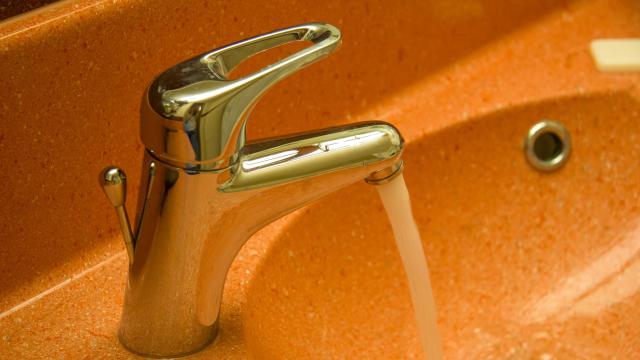As its name suggests, a sink’s overflow hole gives water a place to go in the event that the drain is closed or blocked, and the faucet is left on. While the sink’s drain is located at the bottom of the basin, the overflow hole can be found along one of the sides, towards the top.
Given that the overflow hole performs an important function (no one wants to deal with a flooded room and water damage), it shouldn’t be blocked or clogged. But even if yours is functioning, you should still clean it occasionally—not only to prevent blockages, but also because after a while, the buildup inside the hole can eventually start to stink. Here’s what to do.
What is that black gunk inside the overflow hole?
Have you ever been wiping the inside of your sink, and then see (or smell) black gunk coming out of your drain or overflow hole? That malodorous buildup is a combination of soap residue, lotion, shaving cream, toothpaste, skin cells, phlegm, and bacteria that lives on hair.
By the time the black gunk has reached the top of the drain or overflow hole, it has already coated what’s underneath, increasing the chances of a clog.
How to clean a sink’s overflow hole
Even if you’re not grossed out by the black gunk, it’s a good idea to wear rubber gloves when cleaning your sink’s overflow hole or drain, because the grime can coat and cling to your skin, making it harder to grip things. You may also want to wear a mask and goggles, in case of splattering.
Insert a pipe cleaner (a little thicker and stiffer than the kind used for arts and crafts), bottle brush, or drain brush into the overflow hole, then move it up and down, from side-to-side, and in swirls to remove as much of the gunk as possible. You’ll probably have to clean the brush off a few times as you go—especially if it gets tangled or caught on a clump of hair.
Next, use a silicone funnel (or one made of another material that can withstand heat but doesn’t conduct it) to pour a few quarts of hot water down the overflow hole to flush it out.
While some plumbers recommend using boiling water, others advise against it, saying that it can damage PVC pipes, or crack a porcelain sink. That said, if your pipes are made out of copper, iron, or galvanized steel, boiling water should be fine, provided there are no rubber or plastic joints. If you’re unsure of what to do, use the hottest water that comes out of your sink.
Repeat this process as many times as you need to in order to get rid of the gunk.
You can stop there, or end by deodorizing the overflow hole. To do that, use the funnel to pour one cup of baking soda down the hole, followed by one cup of hot water. Let it sit for 10-15 minutes, then use the funnel to pour a few quarts of hot water down the hole.
Some people suggest using one cup of white vinegar, instead of the hot water, after the baking soda, but as previous Lifehacker coverage has discussed, it’s not the sink-saving combo people think it is.

Leave a Reply
You must be logged in to post a comment.